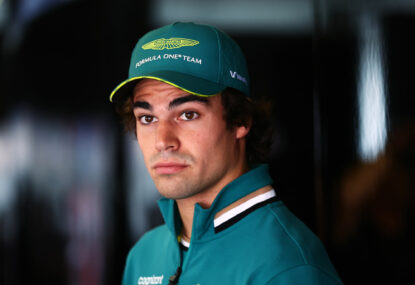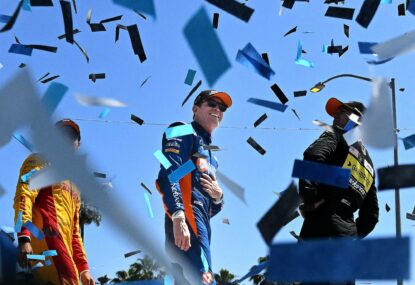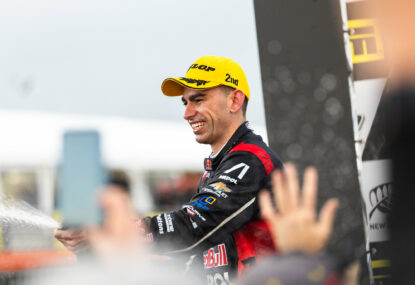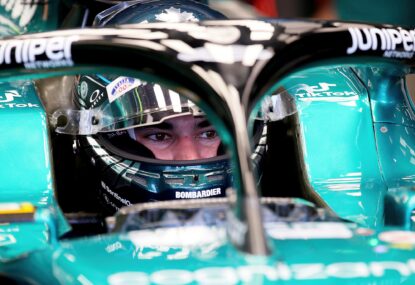“I was deposed today,” Bernie Ecclestone told Germany’s Auto Motor und Sport. “I am simply gone.”
As of Tuesday, 24 January 2017, 86-year-old Bernard Charles Ecclestone is no longer in control of Formula One.
And after a decades-long career of infamously short and slippery language, the ex-F1 CEO’s parting words were straight to the point:
“I am no longer the leader of the company. My position has been taken by Chase Carey.”
Carey, the moustachioed, Harvard-educated American media mogul once proclaimed as Rupert Murdoch’s successor – by Murdoch himself – is now behind the wheel, and he’s wasting little time changing the seating position and adjusting the rear-view mirror.
“I am excited to be taking on the additional role of CEO,” said chairman Carey, confirming Liberty Media’s purchase of Formula One was now complete and announcing a series of rapid-fire hirings.
“I am thrilled Sean [Bratches] is joining Formula One,” Carey proclaimed. “Sean was a driving force in building ESPN into one of the world’s leading sports franchises. His expertise and experience … will be invaluable as we grow Formula One.”
And another.
“I am delighted to welcome Ross [Brawn] back to Formula One,” he announced. “In his 40 years in the sport he’s brought his magic touch to every team with which he has worked … and I have already benefitted greatly from his advice and expertise.”
The face of Formula One shifted dramatically in a matter of minutes, and with intent: change is coming, and quickly.
Fans can be cautiously optimistic these changes will rejuvenate Formula One, after years of analogue operation in a digital age.
F1’s once-unstoppable growth has stalled since the 2000s. Though the sport showcases automotive innovation, F1 itself has refused to meaningfully follow suit beyond gimmicky tweaks.
A reluctance to invest in new media – broken in only the last 24 months – ever-decreasing trackside access, and a bloody-minded march towards pay television at the expense of swathes of viewers earned Ecclestone only detractors. The sport’s new rulers have signalled these areas as key growth opportunities.
But paywalls, high ticket prices and Formula One management’s infamous YouTube take-down notices do not define Ecclestone’s legacy – instead, Formula One’s $US8 billion valuation speaks far more about one of world sport’s most prolific deal-makers.
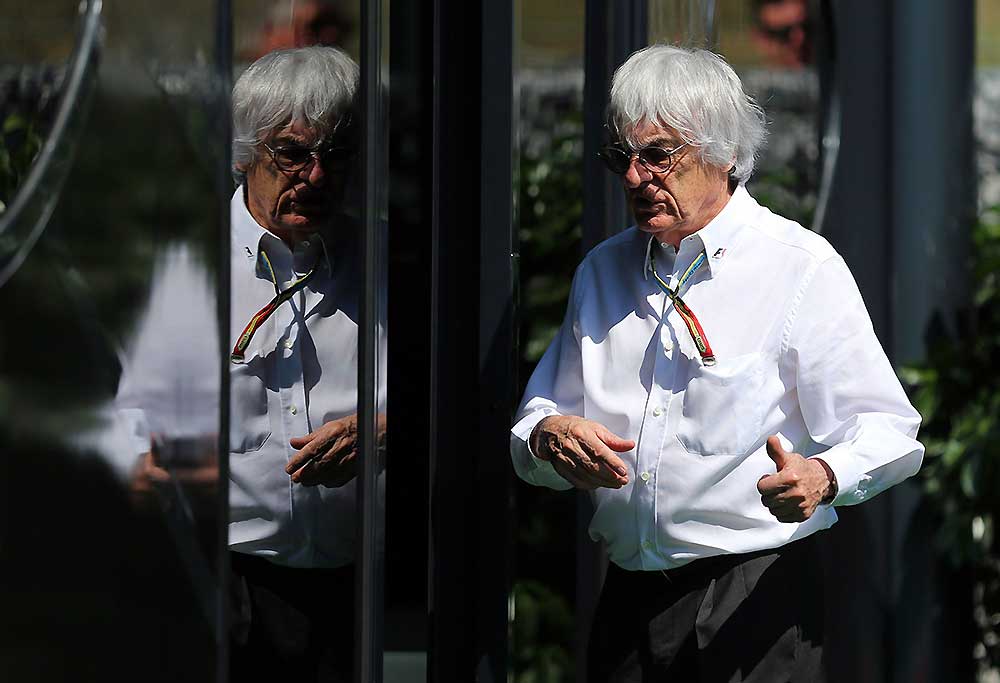
From the moment Bernie joined F1 in the 1950s – first as a driver manager, then as a team owner, later as leader of the Formula One Constructors Association, and eventually as the commercial right holder – he pushed the sport from its amateur garage origins into a world of exclusive glitz and glamour.
His plan was deceptively simple. He whipped the sport into shape with his famous eye for detail – the organisation of advertising banners in any given TV frame is illustrative – to sell it in season-long packages to broadcasters, and with more television eyeballs came more advertising dollars.
Formula One’s newfound riches professionalised the teams and the sport. The cars became faster and more advanced, the drivers became more dedicated and skilled, and Formula One commanded more and more attention. The cycle perpetuated.
On these fundamentally sound foundations Carey, Bratches, and Brawn can at last build F1 its long-term future.
With dab-hand Brawn helming the motorsport side of the business, a pathway towards more egalitarian politics and evidenced-based regulations has been substantially cleared.
With Bratches, a former ESPN executive as the fundamentally old-world media outlet transitioned into the digital age, a strategy for a more accessible sport is assured.
And with Carey’s history of being earmarked for virtual global domination with some of the world’s most significant businesses, the sport’s commercial future is in safe hands.
It’s an undeniably strong team, well matched to the task, and with urgent matters already at hand – the British, Malaysian, and German grands prix hang by threads, and Manor is on the brink of collapse, to name but a few – it won’t take long for their work’s impact to be felt.
But even in acknowledging the sport’s sudden delivery from stagnation to a place of hope, one must concede ground to Ecclestone. After years of talk that only he could do the job of leading Formula One, it has indeed taken a trio to come to grips with the role he has played for decades.
“I’m proud of the business that I built over the last 40 years and all that I have achieved with Formula One,” read Bernie’s formal statement. “[I] would like to thank all of the promoters, teams, sponsors, and television companies that I have worked with.”
Much like the athletes his sport champions, correctly choosing his exit was always going to be difficult, but the peaceful transition of power has allowed the sun to set gracefully on Ecclestone’s tenure.
And so it should – as divisive as his reign was, no-one has, nor perhaps ever will, do as much for Formula One as the iconic mop-topped former used car dealer they call Mr E.
Follow Michael on Twitter @MichaelLamonato


































































































